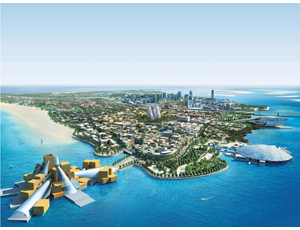
Productivity and safety on construction sites in Asian and Middle Eastern countries that depend on migrant labor have long been issues, but they now also have come under more scrutiny from the United Nations and human rights groups that complain about large scale mistreatment of workers.
But Singapore is setting a higher standard by actually paying construction firms to use more technology in processes and equipment that it believes boosts productivity and safety with fewer workers needed.
With a dedicated $250-million fund, the country is paying a 20% to 25% rebate against the cost of machinery to contractors that can show a 20% to 30% increase in worker productivity and safety.
"Achieving 20% improvement in productivity is possible by using better equipment. Machines can reduce accidents and injuries, which means less loss of man hours," Nick Sowden, managing director of Singapore-based Pacific Platforms, which distributes construction safety equipment on major projects there, told ENR.
Working conditions differ from one project site to another, and from one country to another—from North Korean laborers using bare hands to shift huge rocks and slabs in Malaysia to highly skilled Indian workers engaged in complex construction jobs with western companies in the Middle East and the Singapore labor force.
Under a particular strong lens is Qatar, which is engaged in massive stadium construction to host the soccer World Cup in 2022, estimated to spend as much as $300 billion by 2020.
Amnesty International and Human Rights Watch have expressed concern about what they regard as unexplained deaths of a large number of workers from Nepal, Bangladesh and other countries since 2010 when Qatar won the mandate to host the games.
The UK-based Chartered Institute of Building, regarded as a premier professional body for global construction management, has also expressed concern for more than a year about Qatar migrant labor.
Last year, it extended support to an official initiative called Mandatory Standards of Migrant Worker’s Welfare for Contractors and Subcontractors, which was included in contract documents used in major projects.
The institute said in 2013 that its Middle East president was urging members and expat construction professionals in the region "to challenge unacceptable welfare standards and adopt welfare as a key responsibility on projects."
As construction work on a $27-billion museum and luxury resort complex in Saadiyat in the UAE proceeds, the International Trade Union Confederation has filed a complaint about project managers indulging in different exploitative practices including forced labor.
The 27-sq-mile Saadiyat Island Cultural District is set to include a British Museum, one based on the Guggenheim in New York City and the first Louvre museum outside Paris, as well as a New York University campus now completed and a Zaha Hadid-designed performing arts center.
The UN’s International Labor Organization now has begun a probe into the complaint's abuse allegations.
The construction industry in about a dozen countries in Asia and Middle East depend heavily on migrant labor because local workers are either not capable of or not interested in more demanding and risky jobsite tasks.
The UN agency estimated last May that illegal profits made from the use of forced labor in the private economy worldwide amount to $150.2 billion per year—with as much as $34 billion generated in industries such as construction, manufacturing, mining and utilities.
“Men from India, Sri Lanka, Bangladesh, Pakistan, and Nepal are recruited to work in the UAE in the construction sector; some are subjected to forced labor through debt bondage as they struggle to pay off recruitment fees,” said the US State Dept. in a report last June.
It advised the UAE government to “significantly increase efforts to investigate, prosecute, and punish labor trafficking offenses, and convict and punish trafficking offenders, including recruitment agents and employers."
But as pressure mounts to ensure worker safety, Middle Eastern countries have also begun tweaking visa policies to restrict illiterate workers.
Singapore’s focus on technology to reduce reliance on imported workers also stems from a problem of space and fears of ethnic clashes, which have occurred in the past two years.
The island nation’s Building and Construction Authority has also established a set of best practices to measure productivity in 12 key trades commonly found on construction projects. Builders have been given forms to track productivity in each trade on their projects.
Even so, new reservoirs of immigrant labor, mostly unskilled, have opened up in North Korea and Myanmar where local governments are relaxing previously strict rules that prohibited their citizens from traveling overseas.
As labor from these countries and others such as Laos and Cambodia migrate to construction sites, with the help of agents, little attention is being paid by project owners or home or host countries to provide these workers with skills and safety training.
Sepp Blatter, president of the World Cup governing body FIFA, said earlier this month that liability for worker conditions on Qatar projects rests with their international builders.


Post a comment to this article
Report Abusive Comment